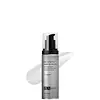What's inside
What's inside
 Key Ingredients
Key Ingredients

 Benefits
Benefits

 Concerns
Concerns

 Ingredients Side-by-side
Ingredients Side-by-side

Water
Skin ConditioningNiacinamide
SmoothingGluconolactone
Skin ConditioningButylene Glycol
HumectantPEG/PPG/Polybutylene Glycol-8/5/3 Glycerin
HumectantAlcohol Denat.
AntimicrobialPentylene Glycol
Skin ConditioningMethyl Gluceth-20
HumectantGlycerin
HumectantPotassium Hydroxide
BufferingHydroxyethylcellulose
Emulsion StabilisingSalicylic Acid
MaskingChlorphenesin
AntimicrobialPhytic Acid
Adenosine
Skin ConditioningSodium Benzoate
MaskingLaminaria Digitata Extract
Skin ProtectingDipeptide Diaminobutyroyl Benzylamide Diacetate
Skin ConditioningAcetyl Hexapeptide-8
HumectantWater, Niacinamide, Gluconolactone, Butylene Glycol, PEG/PPG/Polybutylene Glycol-8/5/3 Glycerin, Alcohol Denat., Pentylene Glycol, Methyl Gluceth-20, Glycerin, Potassium Hydroxide, Hydroxyethylcellulose, Salicylic Acid, Chlorphenesin, Phytic Acid, Adenosine, Sodium Benzoate, Laminaria Digitata Extract, Dipeptide Diaminobutyroyl Benzylamide Diacetate, Acetyl Hexapeptide-8
Water
Skin ConditioningGlycerin
HumectantPentylene Glycol
Skin ConditioningGlyceryl Isostearate
EmollientIsostearyl Isostearate
EmollientC13-15 Alkane
SolventBetaine
HumectantAcrylates/C10-30 Alkyl Acrylate Crosspolymer
Emulsion StabilisingXanthan Gum
EmulsifyingMethyl Gluceth-20
HumectantOryza Sativa Starch
AbsorbentPolyglyceryl-3 Laurate
EmulsifyingSodium Levulinate
Skin ConditioningCaprylyl Glycol
EmollientLevulinic Acid
PerfumingPolyglyceryl-6 Oleate
EmulsifyingHydrolyzed Wheat Protein
Skin ConditioningEthylhexylglycerin
Skin ConditioningHydrolyzed Soy Protein
HumectantSodium Hydroxide
BufferingTetrasodium Glutamate Diacetate
Butylene Glycol
HumectantPectin
Emulsion StabilisingHydroxyethylcellulose
Emulsion StabilisingArginine
MaskingProline
Skin ConditioningSerine
MaskingGlucose
HumectantAcetyl Octapeptide-3
HumectantBacillus/Soybean Ferment Extract
Skin ConditioningSodium Hyaluronate
HumectantChondrus Crispus Extract
Skin ConditioningAcetyl Hexapeptide-8
HumectantDisodium Phosphate
BufferingPolysorbate 60
EmulsifyingSodium Phosphate
BufferingWater, Glycerin, Pentylene Glycol, Glyceryl Isostearate, Isostearyl Isostearate, C13-15 Alkane, Betaine, Acrylates/C10-30 Alkyl Acrylate Crosspolymer, Xanthan Gum, Methyl Gluceth-20, Oryza Sativa Starch, Polyglyceryl-3 Laurate, Sodium Levulinate, Caprylyl Glycol, Levulinic Acid, Polyglyceryl-6 Oleate, Hydrolyzed Wheat Protein, Ethylhexylglycerin, Hydrolyzed Soy Protein, Sodium Hydroxide, Tetrasodium Glutamate Diacetate, Butylene Glycol, Pectin, Hydroxyethylcellulose, Arginine, Proline, Serine, Glucose, Acetyl Octapeptide-3, Bacillus/Soybean Ferment Extract, Sodium Hyaluronate, Chondrus Crispus Extract, Acetyl Hexapeptide-8, Disodium Phosphate, Polysorbate 60, Sodium Phosphate
 Reviews
Reviews

Ingredients Explained
These ingredients are found in both products.
Ingredients higher up in an ingredient list are typically present in a larger amount.
Acetyl Hexapeptide-8, commonly known as Argireline or Acetyl Hexapeptide-3, is a popular peptide in skincare. It’s often referred to as a “Botox-like” ingredient because it helps reduce muscle movement.
By relaxing these micro-movements, Argireline may help minimize the appearance of fine lines and wrinkles. That said, it’s not as powerful as Botox, and research on its long-term effectiveness is still limited.
Beyond smoothing, Argireline may also support collagen production. Collagen is the protein that helps keep your skin firm, bouncy, and well-hydrated by strengthening the skin barrier.
So while Argireline isn’t a miracle fix, it can be a helpful addition to a routine focused on both prevention and skin health.
Read more about other common types of peptides here:
Learn more about Acetyl Hexapeptide-8Butylene Glycol (or BG) is used within cosmetic products for a few different reasons:
Overall, Butylene Glycol is a safe and well-rounded ingredient that works well with other ingredients.
Though this ingredient works well with most skin types, some people with sensitive skin may experience a reaction such as allergic rashes, closed comedones, or itchiness.
Learn more about Butylene GlycolGlycerin is already naturally found in your skin. It helps moisturize and protect your skin.
A study from 2016 found glycerin to be more effective as a humectant than AHAs and hyaluronic acid.
As a humectant, it helps the skin stay hydrated by pulling moisture to your skin. The low molecular weight of glycerin allows it to pull moisture into the deeper layers of your skin.
Hydrated skin improves your skin barrier; Your skin barrier helps protect against irritants and bacteria.
Glycerin has also been found to have antimicrobial and antiviral properties. Due to these properties, glycerin is often used in wound and burn treatments.
In cosmetics, glycerin is usually derived from plants such as soybean or palm. However, it can also be sourced from animals, such as tallow or animal fat.
This ingredient is organic, colorless, odorless, and non-toxic.
Glycerin is the name for this ingredient in American English. British English uses Glycerol/Glycerine.
Learn more about GlycerinHydroxyethylcellulose is used to improve the texture of products. It is created from a chemical reaction involving ethylene oxide and alkali-cellulose. Cellulose is a sugar found in plant cell walls and help give plants structure.
This ingredient helps stabilize products by preventing ingredients from separating. It can also help thicken the texture of a product.
This ingredient can also be found in pill medicines to help our bodies digest other ingredients.
Learn more about HydroxyethylcelluloseMethyl Gluceth-20 is a humectant. Humectants help draw moisture from the air to your skin.
It is created by combining polyethylene glycol with glucose.
Pentylene glycol is typically used within a product to thicken it. It also adds a smooth, soft, and moisturizing feel to the product. It is naturally found in plants such as sugar beets.
The hydrophilic trait of Pentylene Glycol makes it a humectant. As a humectant, Pentylene Glycol helps draw moisture from the air to your skin. This can help keep your skin hydrated.
This property also makes Pentylene Glycol a great texture enhancer. It can also help thicken or stabilize a product.
Pentylene Glycol also acts as a mild preservative and helps to keep a product microbe-free.
Some people may experience mild eye and skin irritation from Pentylene Glycol. We always recommend speaking with a professional about using this ingredient in your routine.
Pentylene Glycol has a low molecular weight and is part of the 1,2-glycol family.
Learn more about Pentylene GlycolWater. It's the most common cosmetic ingredient of all. You'll usually see it at the top of ingredient lists, meaning that it makes up the largest part of the product.
So why is it so popular? Water most often acts as a solvent - this means that it helps dissolve other ingredients into the formulation.
You'll also recognize water as that liquid we all need to stay alive. If you see this, drink a glass of water. Stay hydrated!
Learn more about Water